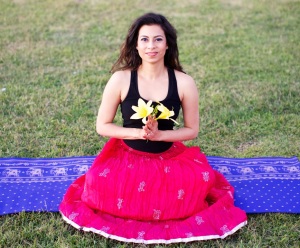‘Let’s come to a comfortable cross legged position on your mat and start with some deep breathing.’
This is how I start every yoga class that I teach. I go on to elaborate that this mental breath work creates the foundation for our yoga practice – not the physical postures or asanas. Much of yoga in the U.S is focused on the physical practice rather than the mental aspect; however we are living in a day and age of mental illness. Usually, diseases like obesity, come from a mental trigger, so why not identify the root cause and focus on mental health in this country?
As the yogis are breathing, I usually start reading something that I find thought provoking. Here is an example of one that comes from a yoga text from India that I found through a friend:
Breathing and Life Span
In addition to influencing the quality of life, the length or quantity of life is dictated by the rhythm of respiration. The ancient yogis studied nature in great detail. They noticed that animals with a slow breath rate such as pythons, elephants and tortoises have long life spans, whereas those with a fast breathing rate such as birds, dogs and rabbits live for only a few years. From this observation, they realized the importance of slow breathing for increasing the human lifespan. Those who breathe in short, quick gasps are likely to have a shorter life span than those who breathe slowly and deeply. On the physical level, this is because the respiration is directly related to the heart. A slow breathing rate keeps the heart stronger and better nourished and contributes to a longer life. Deep breathing also increases the absorption of energy, vitality and general wellbeing.
I love how this profound passage is inspired by animals and reminds us that we can improve our health by placing emphasis on something as simple and profound as our breath.
With attention to this breath work alone, some of my yogis already start to feel the calming effects that this has. Notice the word ‘breath work’ –that is, it takes work to breathe. It’s something many of take for granted since it is a reflex, but breathing fully, deeply, and slowly takes much practice and a focused effort. Many of us take shallow breaths using only the upper third of our lungs. When we are born as little babies, we used our full lung capacity to breathe through our belly. Somehow that changes over the course of our lives. How does this happen? Stress, poor posture, and obesity to name a few.
Imagine the lungs like a balloon. We can better inflate that balloon by increasing the volume of air coming in. We can’t do this if we cave the shoulders in due to poor posture, for example. Poor posture can be attributed to lack of core strength, which is required to lift the spine tall and pull the shoulders back. Poor posture can also be caused by being sedentary for long periods of time, especially at desk jobs, where people tend to hunch forward to look at their computer monitors. Such behavior leads to low back and spinal pain. Imagine that there is a string attached to the top of your head that is being pulled up. This visual may help you to practice good posture.
I end class by asking my yogis to get in the habit of practicing gratitude on a daily basis. I challenge you, my reader, to practice deep breathing techniques, staying in the present moment, and practicing gratitude daily. This will take a great deal of practice, dedication, and effort. I wish you good luck as we travel through this journey of improved mental health together.

